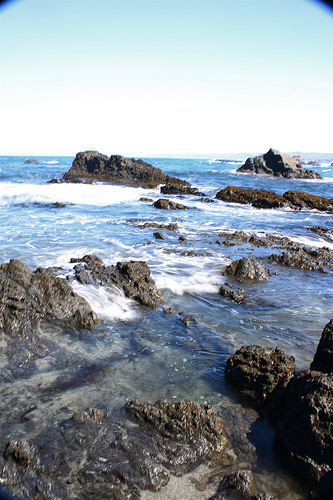
Habitat
Mastocarpus papillatus can be found in the Pacific Ocean. It is most commonly found in warmer temperature water. It is the most common red algae in tropical climates in the high intertidal zones. Species of Red Algae can be found at greater depths than any other photosynthetic organisms. They can be found at these depths since the pigments in their chloroplasts called phycoerithrin absorbs blue light which is a high energy wavelengths. Phycoerithrin has allowed Mastocarpus papillatus to develop into a unique ecological niche. This species can be found at depths of up to 250 meters but are most commonly found in the high intertidal zones.
 Kelp Forest
Kelp Forest
On Kelp Forest rocky reefs, Mastocarpus papillatus can comprise the dominant underlining
species beneath kelp. Fleshy and
filamentous red algae represent an important habitat for
grazers, such as gastropods. These algae
are also an important food source for a wide range of mobile
invertebrate species, such as sea urchins, as well as for
herbivorous fishes. This environment causes many
problems for Mastocarpus papillatus due to potentially
harsh waves and hungry predators, so Mastocarpus papillatus
has developed crucial adaptations for survival. Many
organisms are present in the same environment, and my classmates have
written web pages about some of them. You can read about some of
the organisms
such as
Asterias rubens (Star Fish),
Aurelia autrita (Jelly Fish), and
Chlorurus sordidus (Parrot Fish)
Lets read about these Adaptations! Otherwise you can go back to the Home Page.
